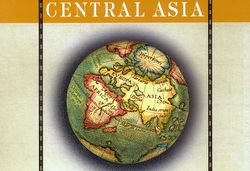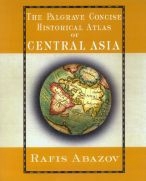Preface
To explain this paradox, we have to open the history textbooks. In the past the region played an important role in the political, military and economic development of Eastern Europe, the Middle East, South and East Asia. For example, one of the most defining military campaigns in world history, which changed the fates of so many countries on the Eurasian continent and led to the establishment of the world's largest empire-the Mongol Empire-was launched from Central Asia. In the nineteenth century the two greatest superpowers of that era-Britain and Russia-vied with each other to establish control over this area of the Eurasian land mass in a competition dubbed the Great Game. The stakes were very high, and poor knowledge of the Central Asian geopolitical terrain and its history cost the players dearly: The Russian Empire lost nearly half of its expeditionary army in its campaign in Khiva in 1840, while the entire British expedition corps was slaughtered on the outskirts of Kabul in 1842. In the early twenty-first century U.S. military strategists misinterpreted terrorist threats from the Al-Qaida base in Afghanistan, and that miscalculation led to the largest terrorist act on U.S. soil in the history of the United States, thus forcing the American government to revise its policy toward Central Asia by establishing the first U.S. military bases in the region. In addition, in the present day, the Central Asian republics control the second largest oil, gas and uranium ore resources on the territory of the former Soviet Union.
Historical and geographical maps can help us understand many of these paradoxes, events and geopolitical considerations. For example, most of the Central Asian capitals are situated just three or four hours' flight time from Beijing, Moscow, Delhi or Tehran. Because of their strategic location and numerous historical, cultural, political and economic relations, and their relatively large diasporas spread across neighboring countries, developments in Central Asia also greatly affect the Russian central provinces, the Xingjiang province of China, Afghanistan, Iran and even such distant regions as Iraq and Turkey.Many questions are currently arising: What role did Central Asia play in world history and what role does it play now? How have Central Asian states interacted with world powers in the past? What can we leam from the geopolitical and historical development in the region? How does the geographic location affect the economic development of the region? This set of easy-to-read historical maps was developed with such questions in mind, in order to depict the geopolitical and geoeconomic dynamics of different eras and the rich and intricate history of the Central Asian region.
The primary purpose of this atlas is to provide students and the general public with an effective tool that will help them visualize historical changes in the Central Asian region. It is also intended to supplement various research and textbooks in Central Asian, Middle Eastern, Eurasian and Russian history. In order to keep the book accessible to a wide audience, however, most of the maps have been developed in a basic format. For specialized maps, tables, and information on economic and political development, climatic changes, transportation infrastructure and other topics, I refer readers to specialized publications-a concise list of which can be found in the selected bibliography section at the end of this book. The atlas is designed to cover a general historical framework, major periods and events in the history of the region, and territorial changes over time; again, for in-depth analysis and research, readers should turn to the specialized literature.
I have followed the same format as other works in the Palgrave Concise Historical Atlas series. The maps in this atlas are produced in two colors and only major geographical features are included, such as major terrains, rivers, mountains and cities. Two factors affected this decision - the cost effectiveness and accessibility of the information to the general public.
One-page texts accompany each map, covering certain historical periods and major developments in the relevant geographical area. These specific texts have been written to help readers develop an understanding of the major features of the various historical periods and to stimulate interest in looking for detailed studies in research publications. Due to space limitations, the texts cover only major events and changes and do not go into detailed discussions.
The preparation of this atlas posed three major challenges: differences in interpretation of the historical development in the region; inconsistency in the spelling of various geographic locations; and frequent changes of the names of various geographic locations. The first challenge arises from the fact that interpretations of Central Asian history has often been ideologically and politically motivated both in the West and in the East. The other challenges arise from the fact that the Central Asian alphabets were changed several times during the twentieth century. Until the 1920s, most Central Asians wrote in the Arabic script and used the Persian and Turkic languages in literature, media, local administration and education.The Soviet government initiated a switch from the Arabic script to the Latin alphabet in the 1920s. In the late 1930s, however, all Central Asian languages switched again, abandoning the Latin for the Cyrillic alphabet. The literary languages were codified and mass education in national languages was introduced. Between the 1940s and mid-1980s the central Soviet government heavily promoted the Russian language as the lingua franca in all the Central Asian republics, and most of the geographic and historical maps were produced in Russian. In the late 1980s and early 1990s the Central Asian governments demanded greater use of their native languages. All republics in the region passed new language laws that made their local languages the only state languages in their respective countries and initiated a gradual switch from the Russian to the local language in all areas of life, including state administration and education. Some countries, such as Turkmenistan and Uzbekistan, went even further by abandoning the Cyrillic alphabet and reembracing the Latin.
In addition, the region's urbanization and nation-state building happened largely in the twentieth century and largely during the Russian imperial and Soviet dominations. Therefore, the names of many places, including cities, towns, provinces, and even mountains and canals have been changed frequently due to the political considerations of those eras. Since 1991 a new trend has emerged as the Central Asian governments tried to de-Russify their geographic landscape and to change place names back to the pre-Russian, pre-Soviet eras' designations or to the native spelling. I have tried to address this problem in a separate table on pages xv-xii.
I would like to acknowledge support from the Harriman Institute at Columbia University, as well as my colleagues and Vladimir Bessarabov of the Cartographic Section, Department of Field Support, United Nations, who generously shared their knowledge and expertise. I would also like to thank Anthony Wahl, Senior Editor, Alan Bradshaw, Production Director, and Kate Ankofski, Editorial Assistant, at Palgrave Macmillan. However, any errors are the author's sole responsibility.
RAFIS ABAZOV
Harriman Institute
Columbia University,
New York


